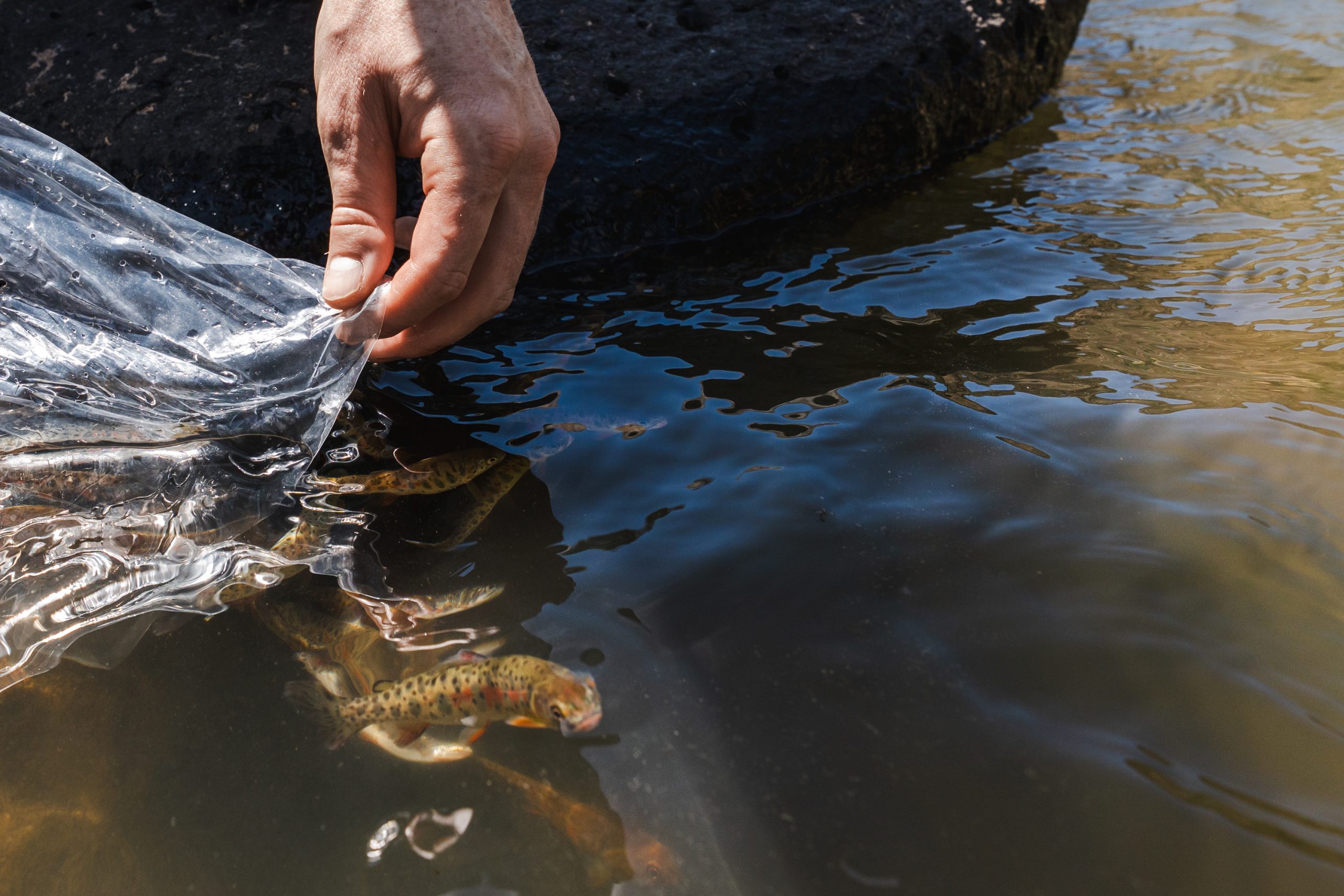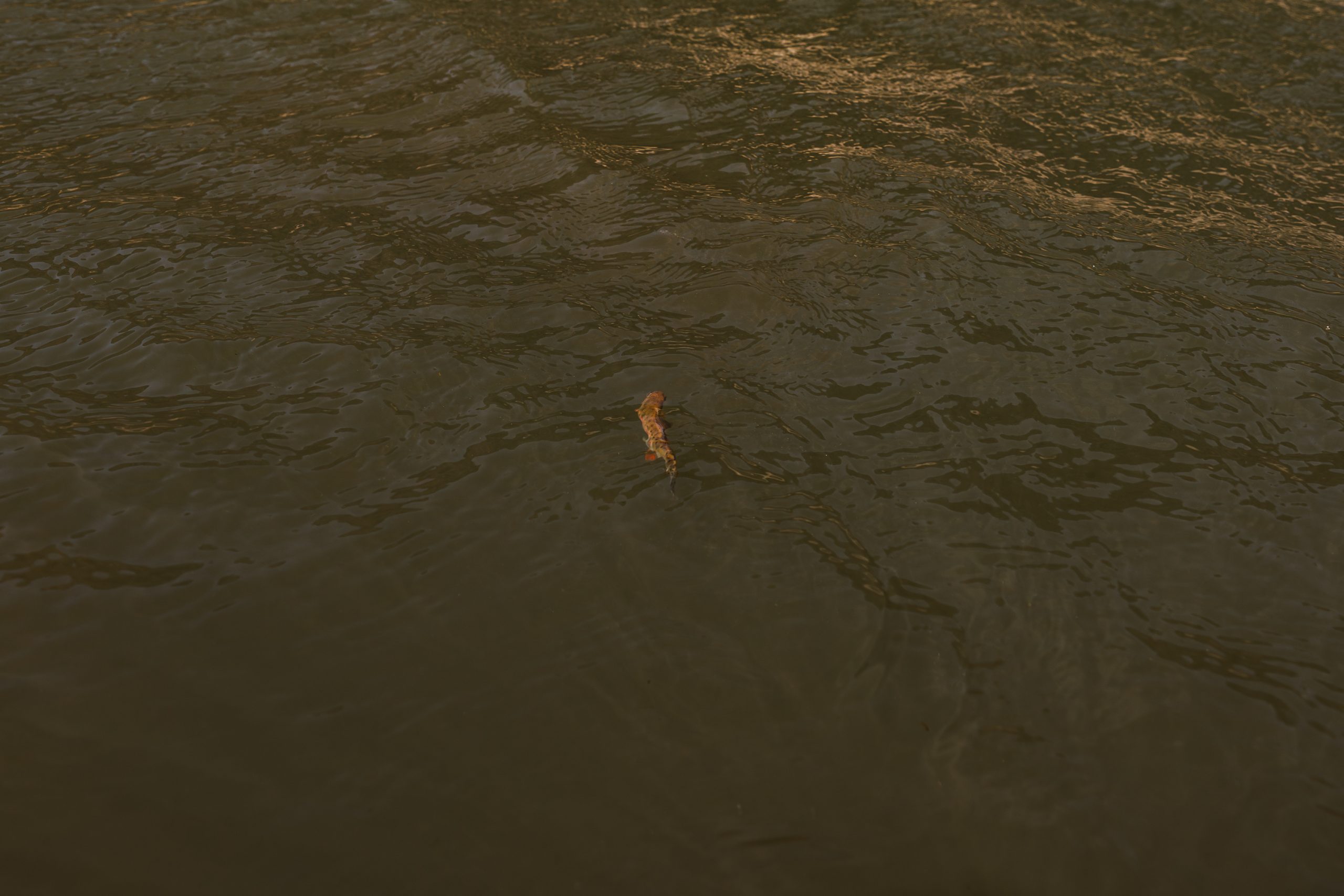Department, partners help Rio Grande cutthroat
trout go home to the Gorge

Once a year, starting in 2008, Rio Grande cutthroat trout fingerlings (young fish about the length of a finger) embark on an expedition, trekking all the way down to the Rio Grande Gorge. I know what you’re thinking – no, they didn’t grow a pair of legs. Instead, they received a little help from their friends: New Mexicans who passionately believe in conservation. These participants carry a bag, or maybe two, filled with the state fish and travel down scenic-yet-steep sections of the Gorge to be released back into the river. This stocking of native New Mexico trout by the Department of Game and Fish is a unique endeavor, relying on multiple agencies and the public’s assistance to carry 5,000 Rio Grande cutthroat trout to their natural habitat. This special event would not be possible without the support from the public who want to see native populations thrive.

Driven by a passion for conservation and promoting native fish, partners like the Bureau of Land Management, the Rio Grande del Norte National Monument, Trout Unlimited, the U.S. Forest Service and Friends of the Rio Grande del Norte are just some of the agencies that help support and partner with New Mexico Game and Fish to make this event a success. But this remarkable act of conservation would not be possible without participants from the public who help transport native fish to hard-to-reach locations.

New Mexico Department of Game and Fish coldwater biologist John Smith describes the importance of this project for the agency, anglers and New Mexicans, as conserving “a native state fish back on the landscape in a river that historically would have been the only trout species, empowering anglers and citizens to take an active part in native fish conservation.”


The Rio Grande cutthroat trout’s journey begins at the Department’s Seven Springs fish hatchery near Jemez Springs, where they are raised until about a year old. Once they mature to the appropriate age, they are taken to the Rio Grande Gorge where they are put into bags filled with oxygen and quickly placed back into the river.
 .
. 

These sections of the Rio Grande are only accessible by foot, which is why the public’s assistance is critical for the success of this program. Participants walk down steep sections of the trail to transfer fish in a timely manner.

Thank you to all the participants, agencies, partners, hatchery workers and conservation officers who helped bring the Rio Grande cutthroat trout back to the Rio Grande.
 New Mexico Wildlife magazine Conserving New Mexico's Wildlife for Future Generations
New Mexico Wildlife magazine Conserving New Mexico's Wildlife for Future Generations